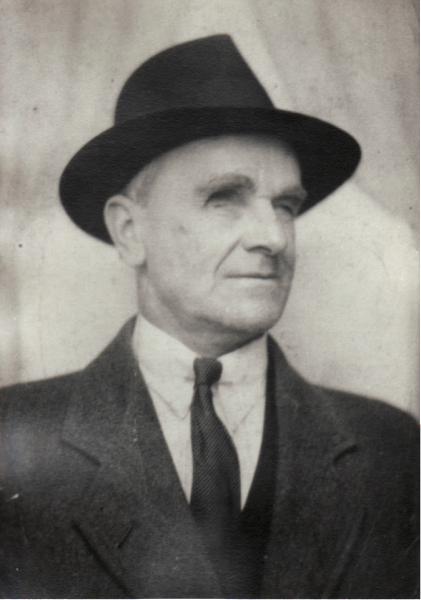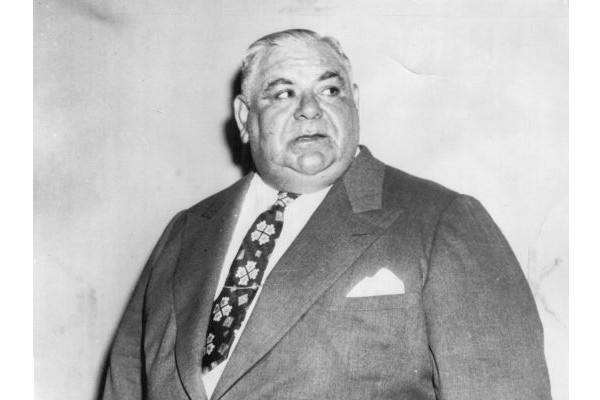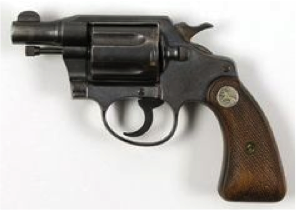By Gerry Griffith
Weelunk Contributor
Keeping out of Harm’s Way in a Dangerous Time

“Man, don’t you know who Big Bill Lias is?” asked the smarmy little man who had a pencil thin mustache, wore an expensive suit, and had a cigarette dangling from sneering lips. He was standing in the Minns’ South Wheeling confectionary in front of the blind proprietor’s counter.
Tom Minns was stoic in the face of the peacock’s challenge. He couldn’t see his unwelcome visitor, but he could sense the man’s taunting nature.
“Of course I know who he is, young man,” Tom answered. “I’ve known who he is since he was 14 and started running illegal liquor in vehicles with false bottoms back in 1914. But that doesn’t change anything. I will not become involved with the numbers game, and you may quote me on that to whoever it is that you will be reporting. I think they will understand. I think your visit here was probably a misunderstanding.”
Tom and Lizzie Minns had heard all about the dark activity that occurred on all sides of their series of little confectionaries in South Wheeling. Rumors and stories of the city’s gambling, illegal booze, prostitution, and mob killings had been the topic of conversation among his constant cavalcade of store “loafers” for years. Big Bill Lias, who weighed in at more than 340 pounds and had a reputation for ruling those activities with an iron hand, was often mentioned in the stories that were told about the strange happenings in Wheeling. Although there had been a close call for Tom, generally speaking the crime they learned about from talk around the store swirled around them but never touched them or their loyal neighborhood customers—so far.
In the 1920s, when prohibition was the law of the land, the loafers gossiped about the numerous Greek coffeehouses around Wheeling, where, in addition to a drink, customers could partake of a dice game called barbooth. Tom heard stories about how rough the competition could be among the establishments. One event in particular set the local shopkeepers on edge. At 1:30 a.m. on Sunday, May 18, 1924, a Greek restaurant owner named Anvigilis Kestivois locked up his 12th Street establishment and walked toward home. Witnesses said two men approached him with pistols in hand and opened fire, hitting Anvigilis. He died later in the hospital. It wasn’t robbery because the day’s receipts from the restaurant were still in his pocket when he was found. The shooters were never found.

Thirteen years later, Prohibition had ended, and bootleggers like Lias had moved on to illegal gambling that consisted of a numbers racket that we would recognize today as being very much like the legal and respectable lotteries that many state governments run every day. The person playing the game picked three numbers and bet a nickel or dime that it would be a winner. The rackets were operated out of restaurants, bars, or even grocery stores—places where people got together.
The switch from booze to numbers didn’t seem to be any less violent. On August 23, 1937, a man named Mike Russell, who was Big Bill’s cousin and high up in Big Bill’s organization until they had a falling out, was gunned down in front of his apartment on 15th Street. He was hit in the head and three times in the chest, and another five shots all but obliterated his left arm. The story told in Tom’s store was that Russell was operating a gambling club in Bridgeport, Ohio, and was trying to muscle in on the numbers game in Steubenville that Lias controlled. Someone said Russell was set to tell all he knew about Big Bill’s organization in a tax case in Clarksburg, W.Va. His murder was never solved.
In addition to Russell’s upcoming testimony, the loafers thought it was also interesting that Big Bill’s first wife, Gladys, had been shot and killed by none other than Mike Russell’s wife in 1934 in the Russells’ apartment in an argument over some gossip that Mrs. Lias didn’t like. Mrs. Russell was tried and acquitted of the crime.
Tom also overheard his customers talk about all the cars with Ohio, Michigan, and Pennsylvania license plates and the tough-looking but well-dressed men who rode in them. Speculation was that they were gunmen from Pittsburgh, Cleveland, and Detroit who were in town to participate in ongoing private feuds among numerous underworld factions throughout the city.
Tom dreaded the day when he would be approached by a thug pressuring him to participate in the numbers racket. Then, in 1935 Tom had an encounter with numbers runners, and a brush with catastrophe. The Lias operation was said to be headquartered someplace in Center Wheeling. Every evening, a driver brought down the day’s numbers take from operations in Steubenville at a high rate of speed. Loafers liked to pass on the story that the mob driver could make it the 33 miles from Steubenville to Wheeling in just 25 minutes.
One evening around 9 p.m., Tom walked up Main Street to deliver a dozen of Lizzie’s mini fruit pies to a woman who had ordered them for a club meeting she was holding at her home. His delivery was safely stowed in a canvas sack he carried over his shoulder. Tom’s little dog, Pal, wasn’t along on this trip since it was well past his bedtime, and, loyal or not, he refused to be aroused—stubborn behavior that may have saved the cranky little dog’s life.
When Tom began to cross Main Street at its intersection with Tenth Street, his keen hearing detected the clicks of the traffic light. The silence that followed told him that there was a lull in the traffic, and it was safe to cross. Before he reached halfway across the street, he heard the roar of a tremendous engine straining to provide the speed that a driver was demanding of it. He extended his cane to feel for the curb and quickened his pace. He didn’t know if the oncoming vehicle would pass in his front or behind him. He heard the engine’s reduced whine as the driver attempted to slow down. Then, his slight bamboo cane was jerked out of his hand, and he heard it snap against metal. What felt like a strong gust of wind blew open his topcoat and sent his fedora flying. It was over in seconds. Tom’s heart was pounding as he inched forward and kicked the curb with his foot before stepping up and into safety on the empty sidewalk.
He heard another vehicle screech to a stop behind him and then go silent.
“Tom, are you okay?” asked a voice that he recognized as Wheeling motorcycle officer Tom Greenwood, who had been chasing the speeding sedan south from Warwood. “I couldn’t catch him. I’m sorry.”
“I’m fine, Greenwood,” Tom responded. “Is my cane around here someplace? Can you see my hat?”
Greenwood, who had been a regular in one of Tom’s confectionaries 10 years before, retrieved his old friend’s hat and flagged down a Wheeling police car and guided Tom into the back seat.
“I’m afraid your cane wouldn’t be much help because it is all busted up,” Greenwood said. “The boys here will give you a lift home, Tom. It’s the least we can do.”
Tom turned on enough charm to persuade the officers to take him north so he could complete his delivery before they drove him back to South Wheeling and the store. Not wanting to frighten Lizzie or Mabel, he never said a word about his close call. They didn’t learn about it for years.
There were plenty of rumors in those days that Big Bill Lias had plenty of help from the police department and other city officials, so it was likely that word of Tom’s close call with a numbers car reached into the dark world that the Minns had been successfully avoiding. A day later, the little bell over Tom’s confectionary door rang just moments after Tom unlocked the door to begin another business day. Tom heard distinct heavy footsteps indicating a very large man was approaching. There was a smell of fresh hair tonic, the kind worn by a well-dressed and barbered gentleman.
“Good morning,” Tom said to his first customer of the day. “What can I get you today.”
“Nothing Mr. Minns…nothing at all,” a soft, calm but strong voice responded. “I’m here to apologize for the trouble you had last night up on Main Street. It shouldn’t have happened. I want you to know that a lot of people regret the scare you must have had. It will be made up to you. You have my word on it. No one will bother you again.”
“That’s fine, mister,” Tom answered, scratching his bald head. “It was frightening, but, except for my cane, there was no harm done.”
Pal arose from a slumber and waddled around the counter from his pillow to get a look at the customer and began to yap in disapproval.
“I want something sweet,” the man said. “Give me some of that candy. I’ll take it all.”
Tom heard the man tap the counter as an indication that he had placed money down for his purchase.
“Do I owe you change?” Tom asked.
“You owe me nothing,” was the reply. Tom heard heavy footsteps draw away, the little bell rang and the man was gone. Tom heard a door slam and a powerful sounding car pull away. He felt around on the countertop to collect the money left by his unusual customer and found, along with the money, a new bamboo cane.
So six months later, when Tom told his second mysterious visitor that trying to enlist the Minns confectionary in the numbers racket was a mistake, he felt pretty confident. So did Pal because the feisty little creature growled loudly at the visitor until he left the store. The man never returned.
More Mabel Files:
For an interesting read about Big Bill Lias, check out the presentation that was written by William Carney and presented to local history groups in 2003 here.
Wheeling native Mike Minder wrote a great deal about Wheeling’s interesting gambling history. For more information about it, look here.






